Dogs are curious, playful, and active, which makes them prone to eye injuries. Common eye injuries in dogs are not just painful; they can lead to long-term vision loss if not addressed promptly. Breeds like Shih Tzus, Pugs, Pomeranians, and other dogs with protruding eyeballs (brachycephalic breeds) are at higher risk. Their unique facial structure makes their eyes more exposed and susceptible to trauma or injury.
Understanding the different types of eye injuries, their signs, and treatment options is crucial. This knowledge can help pet parents act quickly during emergencies and provide the best care for their pets.
Types of Common Eye Injuries and Disorders in Dogs
1. Corneal Ulcers (Ulcerative Keratitis) in Dogs
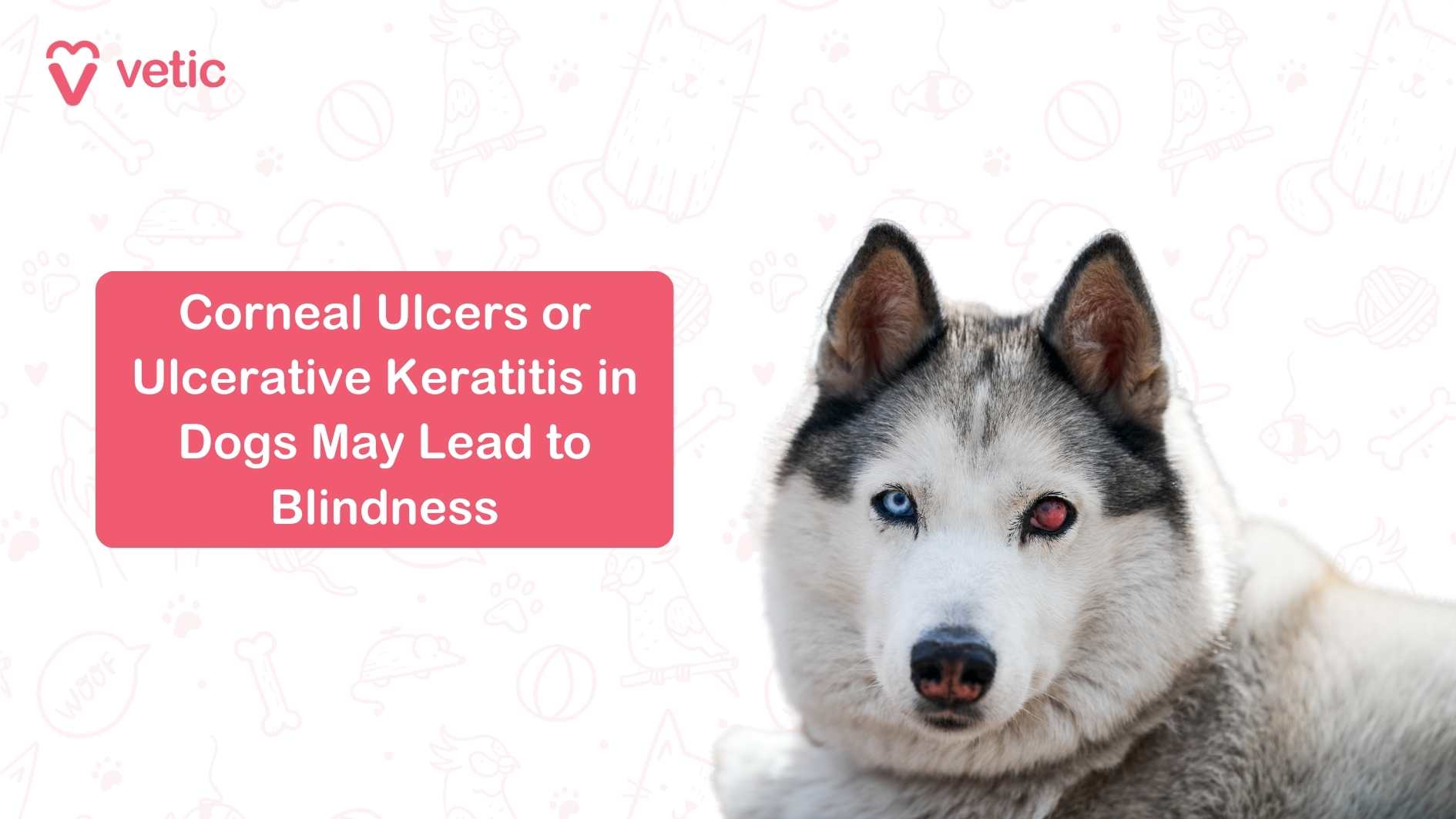
A corneal ulcer is an open sore on the surface of the cornea. This condition can occur due to scratches, infections, foreign objects, or even improper handling of dogs. If left untreated, corneal ulcers can worsen and lead to blindness.
- Signs:
Dogs with corneal ulcers often squint or blink excessively because the ulcer causes pain and irritation. You might notice redness in the eye, excessive tearing, or even thick discharge. The affected eye may appear cloudy or bluish, a sign of corneal damage. - Treatment:
Treatment depends on the severity of the ulcer. Mild cases are treated with medicated eye drops or ointments to promote healing and prevent infection. Severe ulcers might require surgical intervention to repair the cornea and restore its integrity.
2. Foreign Bodies in the Eye
Dogs are naturally curious and often get debris like grass seeds, dust, or small objects stuck in their eyes. These foreign objects can cause significant irritation and even damage if not removed promptly.
- Signs:
If your dog has a foreign body in its eye, it may constantly paw at the affected area due to discomfort. Excessive tearing, squinting, and visible redness are common. In some cases, the foreign object may be visible. - Treatment:
Superficial foreign objects can sometimes be rinsed out with saline solution. However, if the object is embedded or difficult to remove, veterinary assistance is necessary. Attempting to remove it yourself could cause more harm.
3. Proptosis (Eye Displacement) in Dogs

Proptosis is a serious condition where the eyeball is pushed out of its socket, often due to trauma such as a fall, dogfight, or accident. Brachycephalic breeds are especially prone to this condition because of their shallow eye sockets.
- Signs:
A dog with proptosis will have a bulging eye that may look swollen and inflamed. The eyelid might not be able to close over the eye, leaving it exposed. - Treatment:
This is a true emergency. Immediate veterinary intervention is required to reposition the eye. Depending on the severity, the vet may either repair the eye surgically or, in extreme cases, remove it.
4. Conjunctivitis in Dogs
Conjunctivitis is the inflammation of the conjunctiva, the tissue lining the inside of the eyelids. It can result from bacterial or viral infections, allergies, or irritants like smoke and dust.
- Signs:
Affected dogs may have red, swollen eyes with mucous or pus-like discharge. They might rub their face against furniture or paw at their eyes because of itching or discomfort. - Treatment:
The treatment approach depends on the cause. Bacterial conjunctivitis is treated with antibiotic drops, while allergic conjunctivitis may require anti-inflammatory medication. Always consult a vet to identify the cause and administer the correct treatment.
5. Glaucoma in Dogs
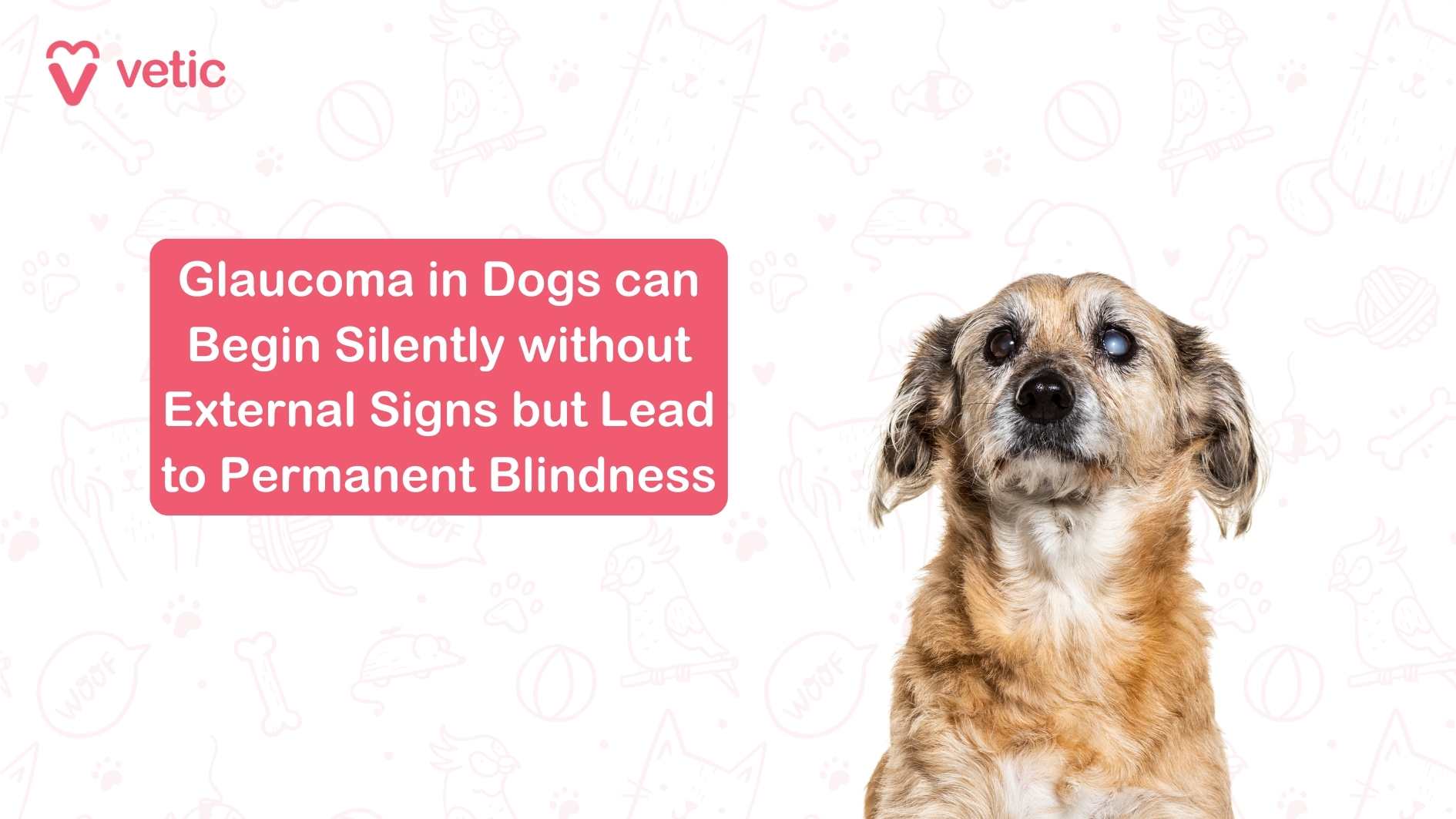
Glaucoma occurs when there is increased pressure inside the eye, which can damage the optic nerve and lead to vision loss. It is a painful condition that requires immediate attention.
- Signs:
A dog with glaucoma may have a cloudy or milky appearance in the eye, an enlarged eyeball, and show signs of pain, such as squinting or pawing at the eye. Sudden blindness can also occur in severe cases. - Treatment:
Treatment focuses on reducing the pressure in the eye. Medications can help manage the condition, but in some cases, surgery may be necessary to relieve the pressure and prevent further damage.
6. Eyelid Injuries in Dogs and Pups
Injuries to the eyelids can occur due to fights, scratches, or accidents. These injuries can disrupt the eyelid’s function, which is crucial for protecting the eye and spreading tears evenly.
- Signs:
Bleeding, swelling, and redness around the eyelid are common signs. Your dog may struggle to blink properly, which can lead to further irritation. - Treatment:
A vet may clean and suture the wound to facilitate healing. Antibiotics might be prescribed to prevent infection.
7. Keratoconjunctivitis Sicca (Dry Eye) in Dogs
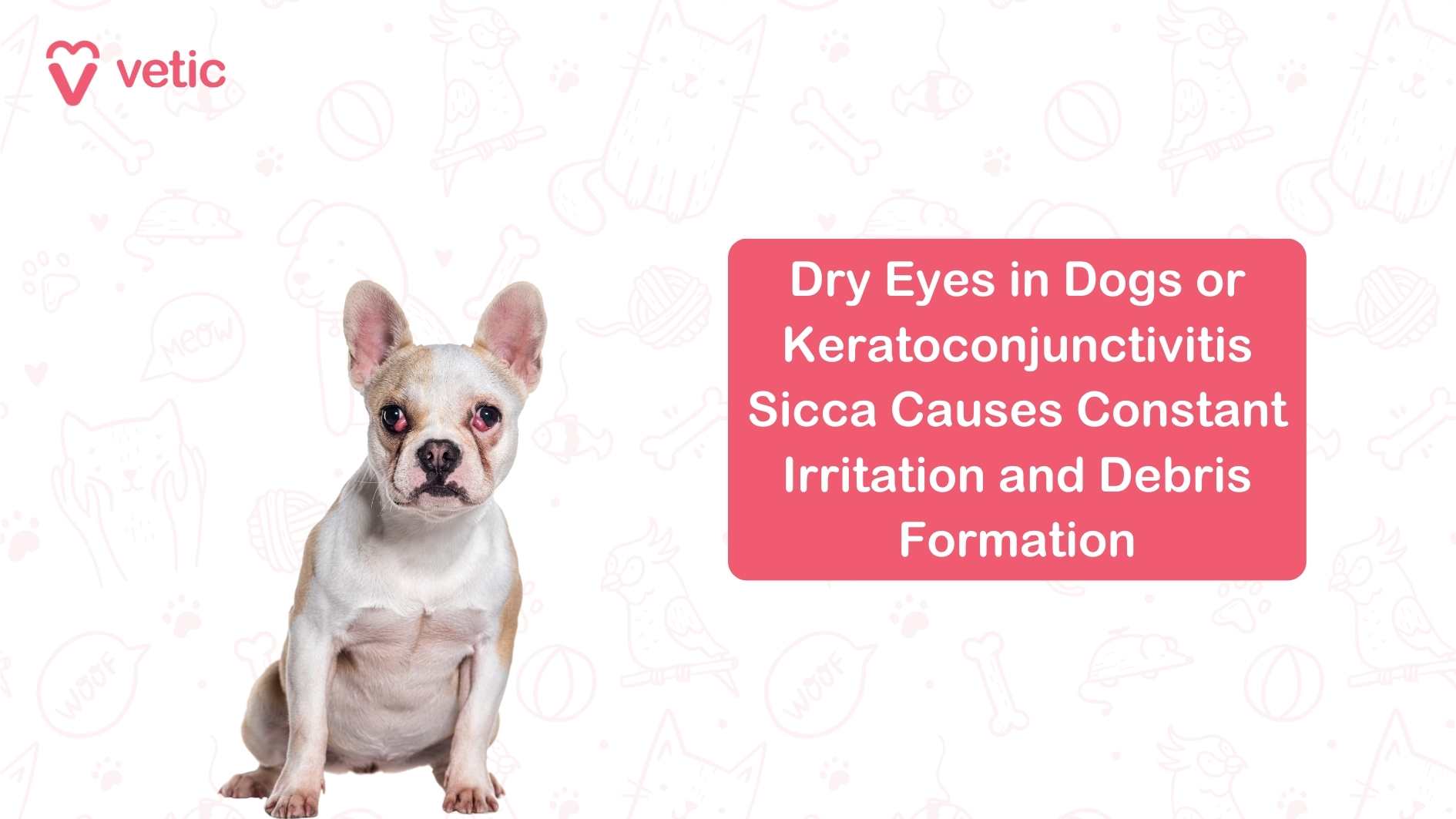
Dry eye occurs when the tear glands fail to produce enough tears to keep the eyes lubricated. This can lead to chronic irritation and inflammation.
- Signs:
Symptoms include thick, sticky discharge, redness, and frequent blinking. Dogs with dry eyes often appear uncomfortable and may have recurring eye infections. - Treatment:
Artificial tears and medications that stimulate tear production are the main treatments. Regular application of these drops is essential for managing the condition.
8. Orbital Fractures
Orbital fractures involve breaks in the bones surrounding the eye, typically due to blunt trauma. These injuries can impair eye function and lead to significant discomfort.
- Signs:
Swelling, bruising, and pain around the eye are common signs. Dogs may struggle to move their eye normally or show sensitivity when the area is touched. - Treatment:
Surgery is often required to repair the fractures and stabilize the area. A prompt veterinary assessment is crucial to prevent complications.
When Is a Common Eye Injury in Dogs an Emergency?
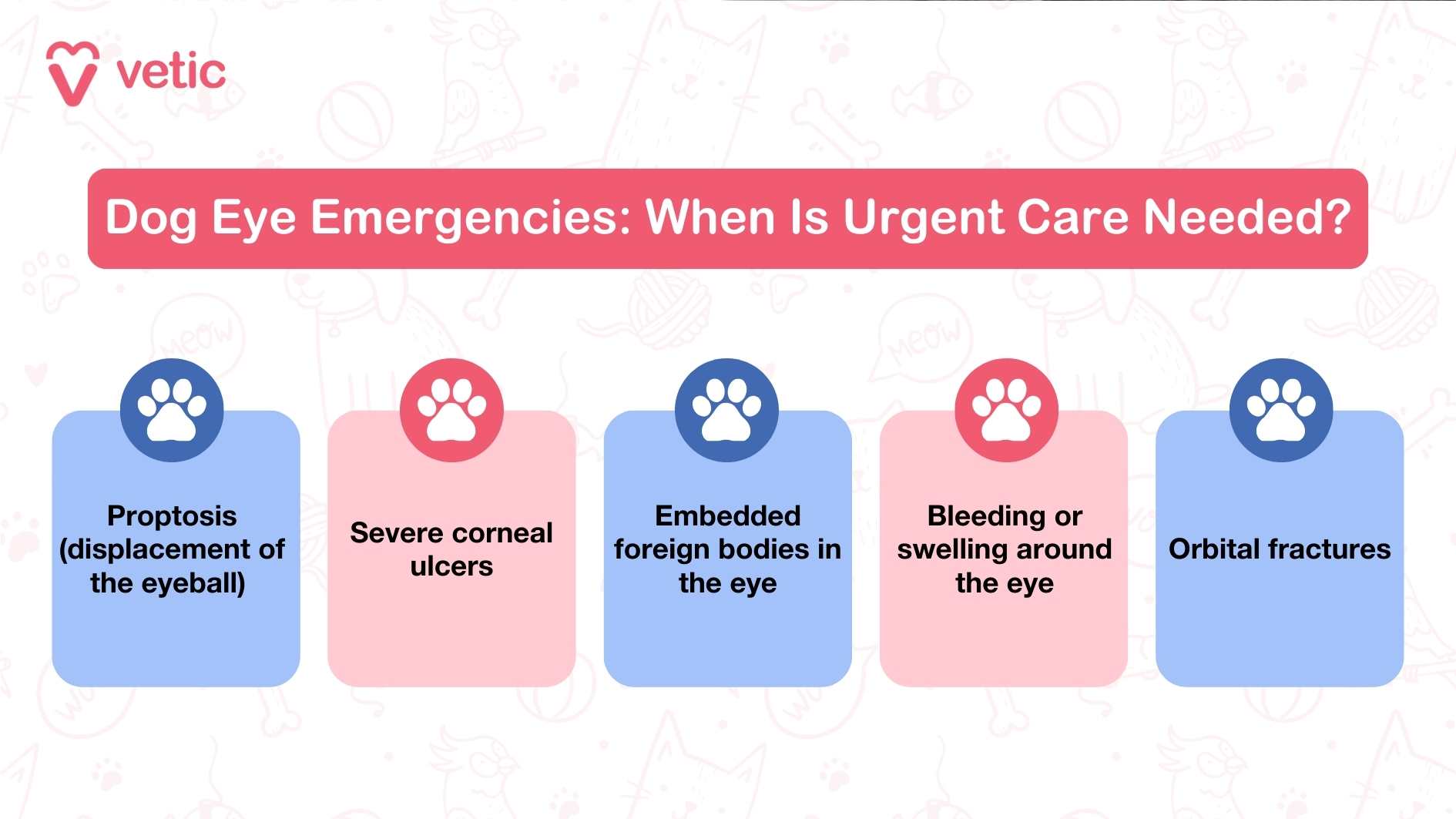
Some eye injuries require immediate veterinary attention. The following situations demand urgent care:
- Proptosis (displacement of the eyeball) is a critical emergency due to the risk of permanent vision loss.
- Severe corneal ulcers causing constant discomfort or vision changes should be addressed promptly.
- Embedded foreign bodies in the eye or severe tearing and redness require immediate professional removal.
- Glaucoma attacks can lead to irreversible blindness without timely intervention.
- Bleeding or swelling around the eye caused by trauma needs urgent veterinary care.
Care for Dogs Undergoing Eye Treatment
Caring for a dog with an eye injury requires consistency and patience. Administer all medications, such as eye drops and ointments, exactly as prescribed.
Prevent your dog from rubbing or scratching their eyes by using an Elizabethan collar. Regularly clean the eyes gently with a damp cotton ball to remove discharge, but avoid touching any injured areas.
Dogs recovering from eye surgery need a quiet and stress-free environment. Limit physical activity, and attend all follow-up visits to monitor healing progress.
Prevention of Common Eye Injuries in Dogs
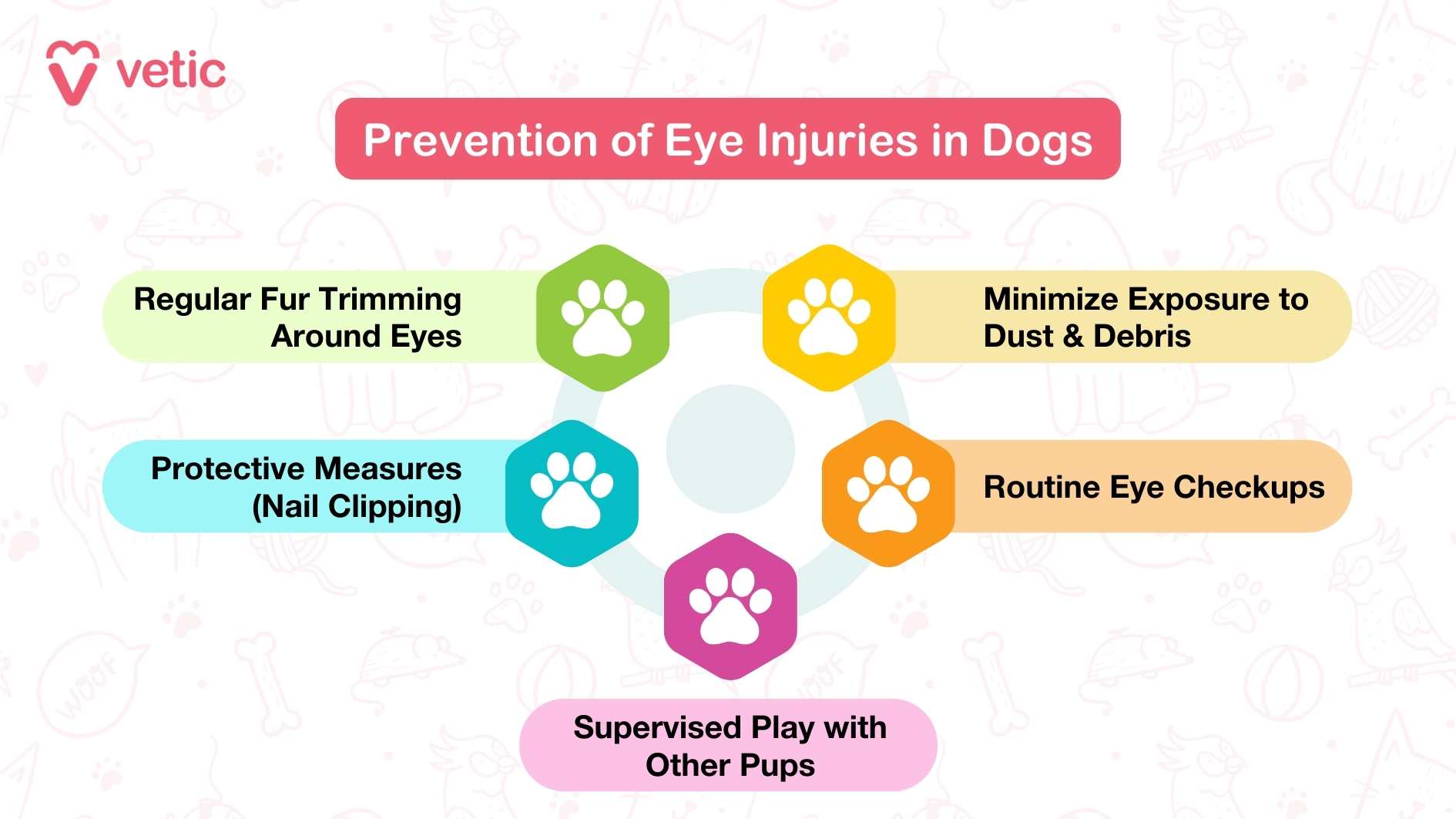
Preventive care can significantly reduce the risk of common eye injuries in dogs:
- Regular Grooming: Keep the fur around your dog’s eyes trimmed to avoid irritation.
- Protective Measures: Avoid letting your dog stick its head out of car windows, as debris can easily enter their eyes.
- Supervised Play: Watch your dog during playtime to ensure they don’t encounter sharp objects or overly rough playmates.
- Routine Checkups: Regular vet visits can help catch potential eye issues early.
- Clean Living Space: Minimize exposure to dust and irritants in your dog’s environment.
Rounding Up: Dog Eye Conditions and Care
Eye injuries in dogs are more common than you might think, especially in breeds with protruding eyes. Understanding the signs of different eye conditions and knowing when to seek emergency care can make a difference in your pet’s recovery. Always prioritize prevention and consult your vet immediately if you notice anything unusual about your dog’s eyes.

